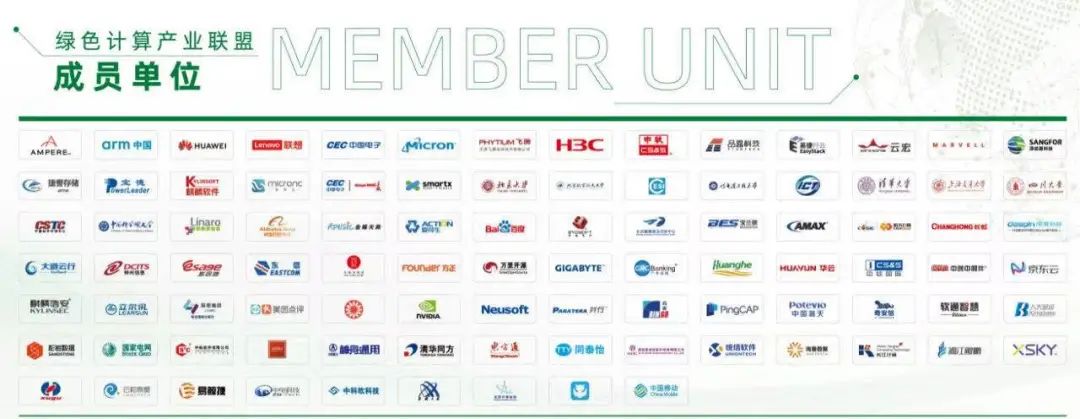Dr. An is here!
We are pleased to introduce “Dr. An”, who is backed by a top-notch technical expert team from Ampere Computing, dedicated to sharing cutting-edge technical analyses, application insights, and trend observations in the cloud-native field with you. Let’s welcome “Dr. An” to shine on stage and bring the first exciting sharing!
【Follow】 and 【Star】 Ampere, so you won’t miss any exciting sharing.
The Tencent CVM Standard SR1 is Tencent Cloud’s first new generation CVM standard computing instance specification equipped with ARM architecture processors. The SR1 is based on the Ampere Altra processor with a full-core consistent frequency of 3.0GHz, with instance cores ranging from 1 to 64, and supports various processor and memory ratios such as 1:2 and 1:4, providing users with excellent cost-performance compared to x86 architecture instances.
This article will conduct a performance comparison of SR1 against the latest x86 architecture S6 (Intel Icelake) instance under multiple core workloads in web applications, providing a comprehensive data reference for the cost-performance advantage of SR1 in web application scenarios.
Introduction to Web Applications
Web services are web applications based on open standards (XML, SOAP, HTTP, etc.), which can be used independently of the hardware or software platform that implements them, as well as independently of the programming language in which they are written. This independence determines that applications based on web services are loosely coupled, component-oriented, and implemented using containerized microservices.
With the development of cloud computing and the elastic advantages of cloud servers, web applications have evolved into a more advanced form of cloud-based applications that have become mainstream. As “evolved” web applications, cloud-based applications typically have advanced features, access to a wider range of services, and provide dynamic content based on business logic to their customers. Typical examples of such web applications today include social applications, interactive media platforms, e-commerce websites, online digital services, and IoT systems.
Web applications are client-server framework systems, where the client refers to the program used by individuals to run applications. It can be a browser or software that needs to be installed and run independently, such as an app on a mobile phone, a WeChat mini-program, or a computer client.
In cloud applications, the “server” side is the cloud, which is based on a microservices architecture cloud-native model, where a single service is composed of many loosely coupled and independently deployable smaller components or services. The microservices architecture decomposes traditional monolithic applications into their component functions, and application functions are no longer deployed in a single code source. Each function is isolated as a small, self-running application (i.e., microservice), which typically runs in a containerized environment for lighter deployment and execution.
The entire stack can logically be divided into three layers: the frontend routes user requests to the backend via load balancer servers, followed by a loosely coupled modular business logic layer, and finally the data caching and storage layer.
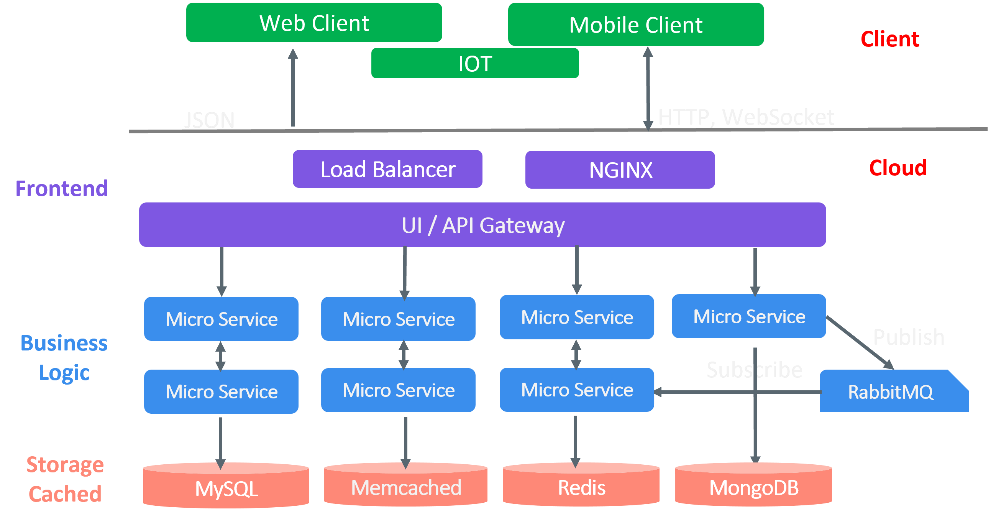
This evaluation will select NGINX, Redis, and MySQL as the three most critical workloads in web service systems, as their performance data can directly reflect the performance of the SR1 cloud server in web application scenarios.
Testing Environment
To comprehensively understand the overall performance of the new architecture instance SR1 under web applications, this article will conduct tests on two different size instances, with the specific instance configurations as follows:

NGINX is an open-source high-performance HTTP server and reverse proxy that bundles many other web service-related features. NGINX is commonly used as a load balancer, reverse proxy, and HTTP server in many popular high-traffic websites. It uses a complex event-driven architecture that allows it to support hundreds of thousands of concurrent connections. The performance of NGINX can reflect the business processing capacity and user concurrency capacity of web applications. The following figure shows the test configuration under the testing instance.
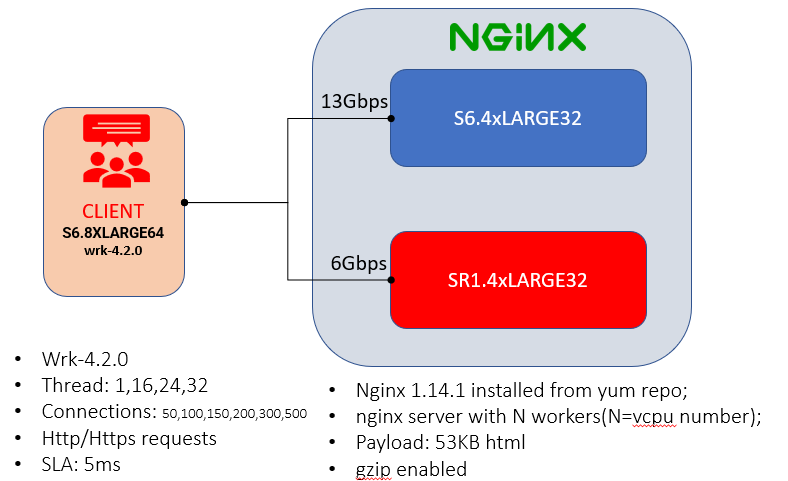
Redis is an open-source in-memory key-value data structure store, used as a database, cache, message broker, and stream engine. Redis is a mainstream option in many web service infrastructures. According to the monthly ranking of DB-Engines.com, Redis is also the most popular key-value store system.
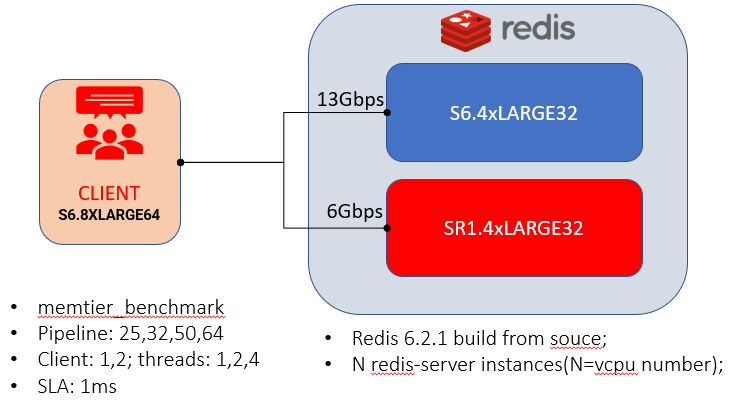
MySQL is a relational database management system and one of the most popular relational database management systems. In terms of web applications, MySQL is the best choice for RDBMS (Relational Database Management System) application software.
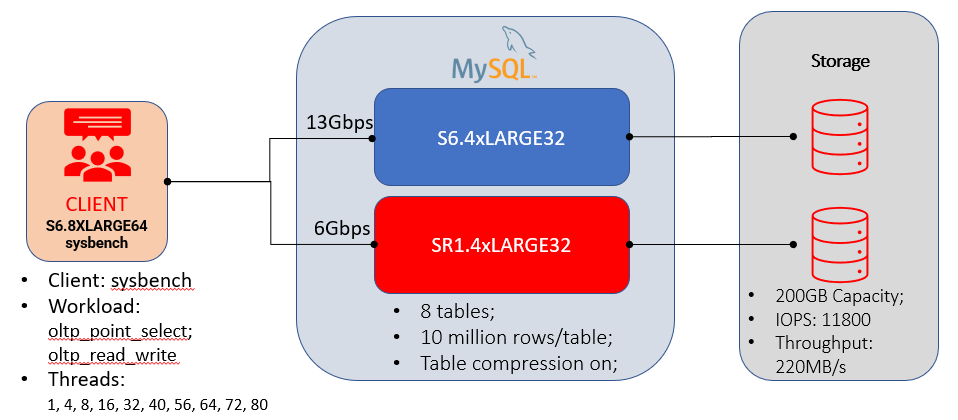
Testing Results
To make the data more intuitive, this article will use the S6 cloud instance based on the Intel IceLake CPU as a comparison benchmark, which is 100%, with SR1 instance data taken as a relative proportion.
First, we look at the data of NGINX on the 8 vCPU instance. In this test, the number of HTTPS requests per second under a 5ms P99 latency SLA is used as the performance indicator. In terms of performance, the 8-core SR1 instance based on the Ampere Altra CPU is 35% higher than the S6; considering the price factor, the one-year billing price shows that the cost-performance of SR1 is 77% higher than that of the S6 instance.
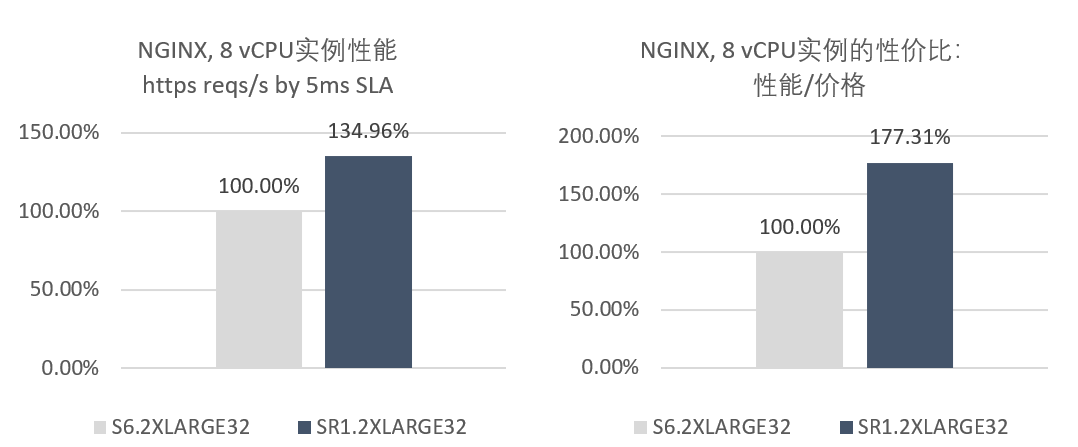
Under the 16 vCPU instance configuration, there is a slight change, with the performance improvement of SR1 relative to S6 increasing by 5% to reach 40%, while the cost-performance improvement reaches 85%.
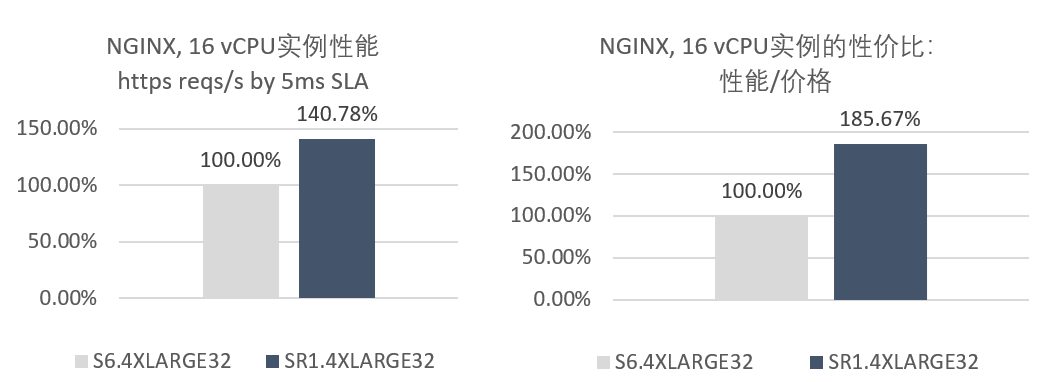
Next, we look at the data of Redis . Similar to the comparison method with NGINX, the performance indicator in the test is the number of requests processed per second under a 1ms P99 latency SLA. In the 8 vCPU instance, SR1 is 14% higher than the baseline S6 instance. Similarly, considering the price factor, the cost-performance of SR1 in Redis is over 50% higher than that of the baseline S6.
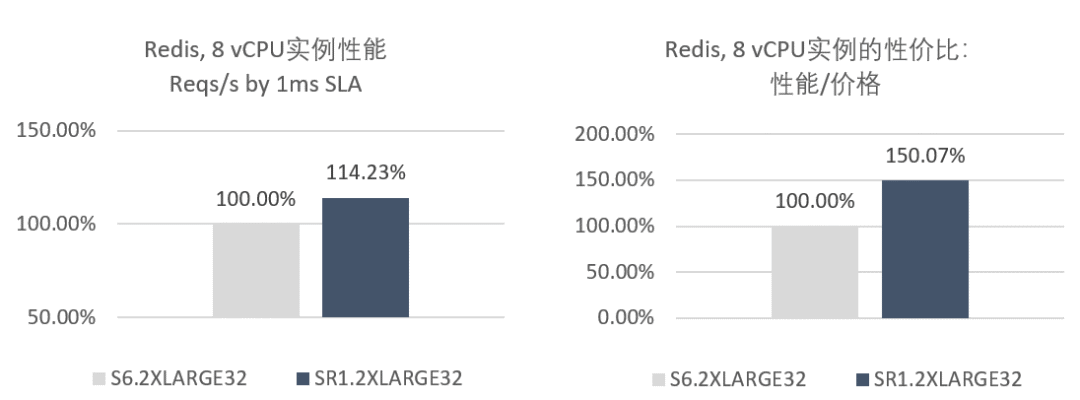
In the 16 vCPU instance, the performance of SR1 is 8% higher than S6, and the cost-performance improvement is 43%.
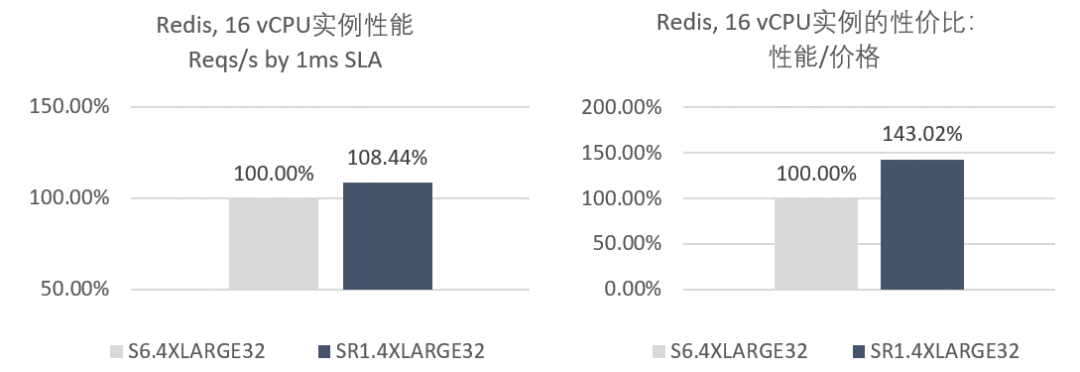
Finally, let’s look at the data for MySQL . In this test, the performance is measured by the mysql oltp_read_write load, which has higher requirements for computing power and storage, with the number of queries per second under a 100ms P95 latency SLA as the performance indicator. Considering the price factor, the cost-performance of SR1 maintains an advantage of 46% (for the 8 vCPU instance) and 51% (for the 16 vCPU instance) over the S6 instance.
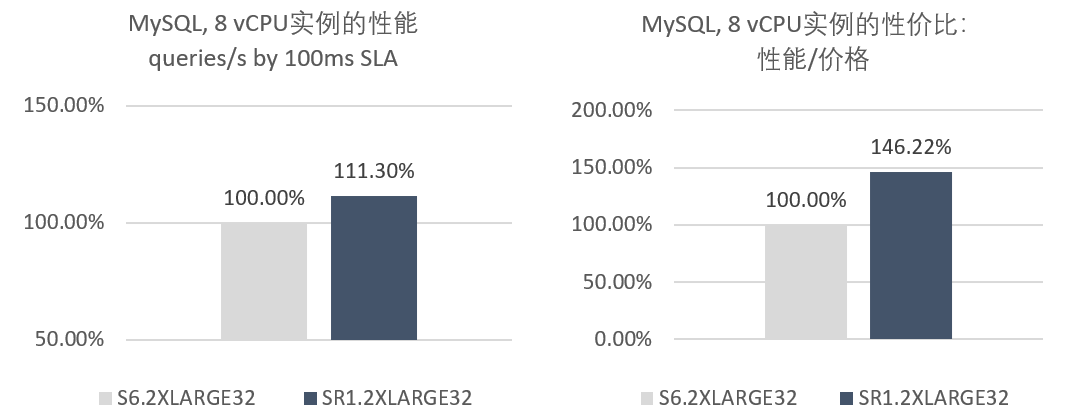
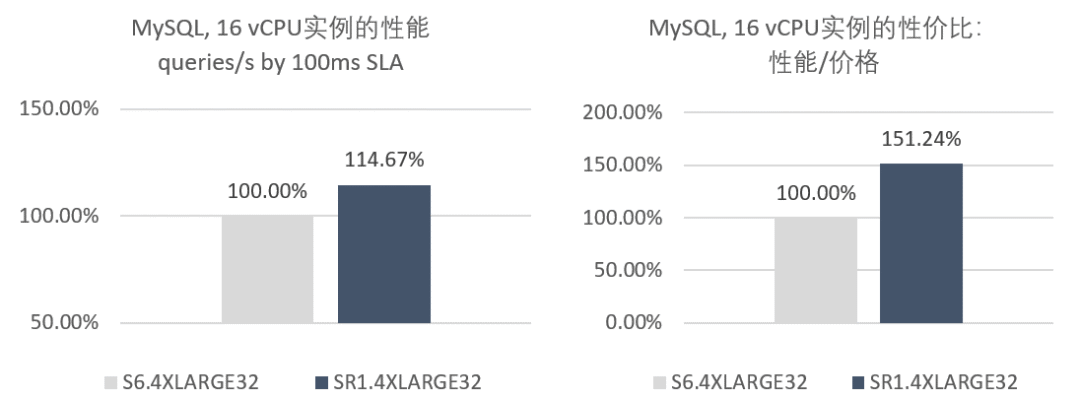
Conclusion
Based on the testing data of the three key workloads in web applications, it can be concluded that the cost-performance of web applications based on the SR1 instance is, on average, over 50% higher than that of the S6 instance. This means that software service providers for web applications can provide over 1.5 times the business processing capacity at the same cost, or use fewer cloud servers while maintaining the current business volume, saving over 33% in absolute costs.
Finally, deploying web applications on ARM architecture is nearly identical to the x86 platform. The three key workloads tested performed very smoothly on the SR1. NGINX can be run directly with Yum installation, and Redis and MySQL can also be installed via Yum, but for performance considerations in this evaluation, the source code was recompiled without any source code modifications. The source code was downloaded via wget, and after configuring the correct compilation parameters, it was compiled.
Ampere Computing’s Free Trial Program has opened an application channel for developers to apply for SR1 instances. Interested individuals can try SR1 instances for free through this program and personally experience the new architecture computing platform.
Visit the Ampere Computing Free Trial Program:
https://solutions.amperecomputing.com/where-to-try
Additionally, developers can also obtain a large number of directly usable, compatible image information compiled on the ARM architecture, including development languages, applications, and tool software packages, from the Ampere Solutions Website, covering most of the resources required for cloud-native development.
Visit the Ampere Solutions Website:
https://solutions.amperecomputing.com/
Appendix
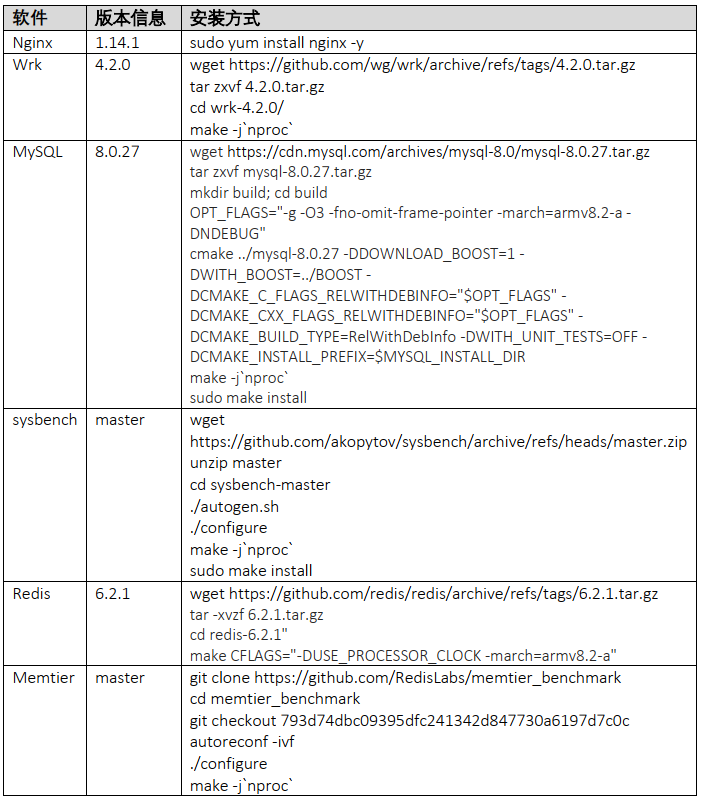
About the Green Computing Industry AllianceSince its establishment in 2016, the Green Computing Industry Alliance aims to collaboratively build a green, open, independent, and shared ecological system, dedicated to promoting the development of the green computing industry and building a platform for industry communication and cooperation to enhance enterprises in areas such as PCs, servers, storage, operating systems, and databases, promoting win-win cooperation in the computing field. It has now become a global alliance with the most complete Arm infrastructure server chip partners, including Kunpeng, Feiteng, Ampere, and Marvell.
